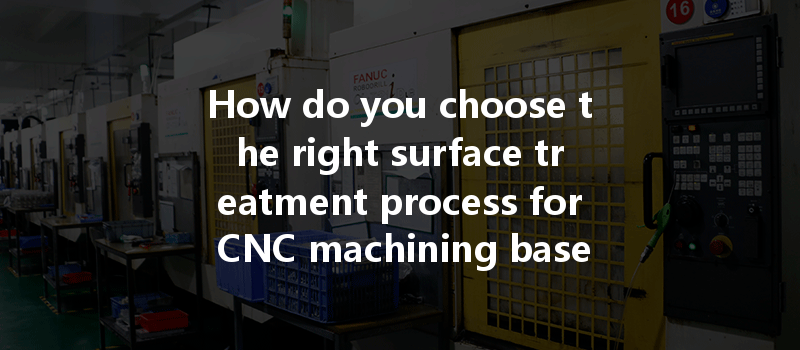Have you ever stopped to think about the crucial role surface treatment plays in the durability and functionality of CNC machined parts? Surprisingly, a significant percentage of failures in mechanical components can be traced back to inadequate or inappropriate surface treatment. In the manufacturing industry, the right surface treatment can enhance the quality, longevity, and reliability of parts by creating a barrier against corrosion, wear, and environmental damage.
So, how do you navigate the intricate world of surface treatments to find the appropriate process tailored to your specific part requirements? In this blog, we will unravel the complexities of surface treatment in CNC machining, discuss various processes, and provide practical guidance to help you make an informed choice.
Understanding Surface Treatment
What is Surface Treatment?
Surface treatment refers to a process that alters the surface of a material to achieve desired properties such as improved corrosion resistance, enhanced aesthetic appeal, or increased wear resistance. These treatments can significantly influence the lifecycle and performance of CNC machined components.
Why is Surface Treatment Important?
Different Surface Treatment Processes
Choosing the right surface treatment requires an understanding of various techniques available. Here’s a detailed look at the most common and relevant processes used in CNC machining.
Overview: Anodizing is an electrochemical process that converts the metal surface into a decorative, durable, corrosion-resistant, anodic oxide finish.
Applications: Commonly used for aluminum parts in industries such as automotive, aerospace, and architecture.
Advantages:
Considerations:
Overview: Electropolishing is an electrochemical process that smoothens the surface of a metal part by removing a thin layer of material.
Applications: Frequently used in the medical, food processing, and aerospace industries to meet stringent cleanliness requirements.
Advantages:
Considerations:
Overview: Powder coating is a dry finishing process where finely ground particles of pigment and resin are electrostatically charged and sprayed onto parts.
Applications: Widely used for metals in automotive, furniture, and appliance industries.
Advantages:
Considerations:

Overview: Plating involves applying a metallic layer onto a substrate through various methods such as electroplating, electroless plating, or hot-dip galvanizing.
Applications: Common in producing decorative or protective finishes on components like fasteners, automotive parts, and hardware.
Advantages:
Considerations:
Overview: Coatings can be organic or inorganic and are applied to parts to protect against environmental degradation.
Applications: Often used in industries like oil and gas, marine, and automotive.
Advantages:
Considerations:
Factors to Consider When Choosing a Surface Treatment Process
Now that we have reviewed the different types of surface treatments, it’s essential to understand the key factors that can impact your decision on which process to apply.
Material Type
Different materials respond uniquely to surface treatments. Metals like steel, aluminum, and brass may undergo different treatments based on their physical and chemical properties. Always consider compatibility when selecting a surface treatment.
Application Purpose
The intended use of the machined part should dictate the chosen treatment. For example, parts exposed directly to harsh environments may necessitate corrosion-resistant treatments, while aesthetic components may prioritize visual appeal.
Cost Implications
Cost is always a significant factor in decision-making. Evaluate both the initial costs of various surface treatments and the long-term benefits. Some treatments may entail higher upfront costs but yield greater savings over time through enhanced durability.
Compliance and Standards
For certain industries, specific surface treatments may be required to comply with regulatory standards. Ensure that you speak with quality assurance teams to confirm which treatments align with industry regulations.
Environmental Impact
As sustainability becomes increasingly critical, consider the environmental implications of surface treatment processes. Eco-friendly options exist, such as powder coating, which offers a lower environmental impact compared to traditional solvent-based paints.
Performance Requirements
Different applications demand different mechanical properties. Consider the required hardness, scratch resistance, or sleekness of the parts to guide your choice of surface treatments.
In the world of CNC machining, selecting the right surface treatment process is paramount for ensuring the performance and longevity of manufactured parts. Through our exploration of various surface treatments—such as anodizing, electropolishing, powder coating, plating, and coating—we have highlighted their unique advantages, applications, and considerations.
As you move forward in your projects, it’s crucial to remember the importance of aligning your surface treatment choices with the specific requirements of each part, including material type, application purpose, and cost implications. Thoughtful decision-making in this area can lead to significant improvements in product performance, longevity, and customer satisfaction.
We hope this comprehensive guide has provided valuable insights into the complexities of surface treatments in CNC machining. By making informed choices, manufacturers can drive efficiency, quality, and sustainability in their processes. Your success depends on understanding and leveraging the right surface treatment strategies—because every detail matters in manufacturing excellence.



